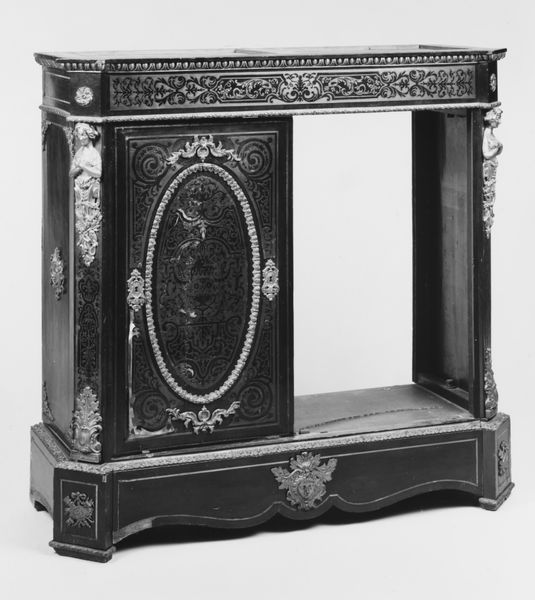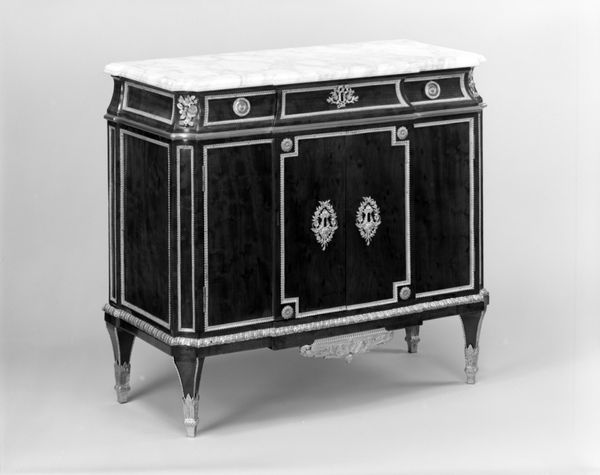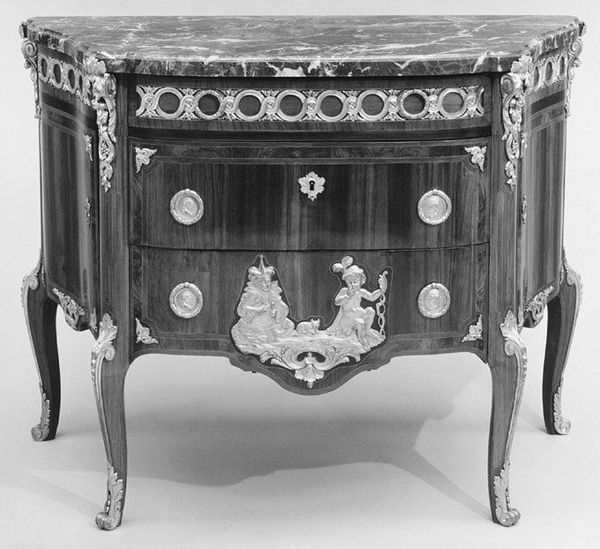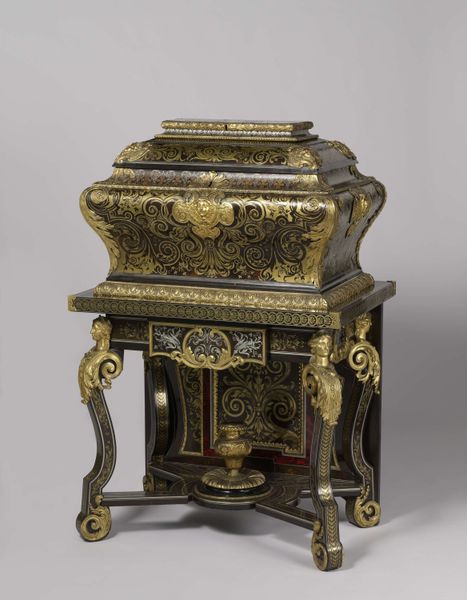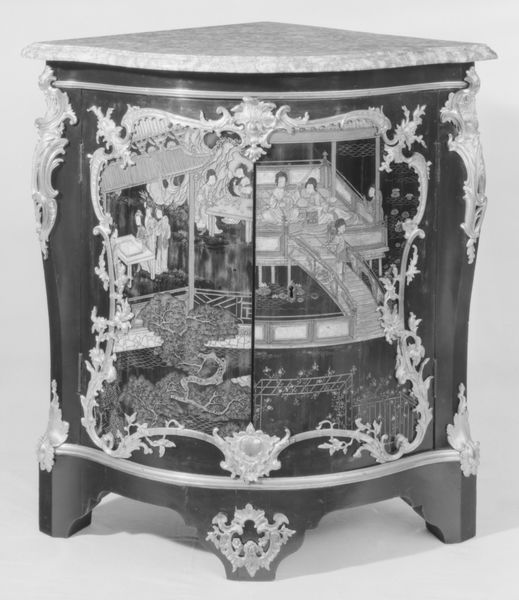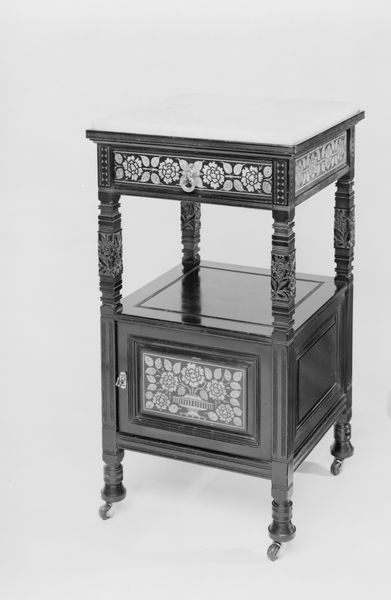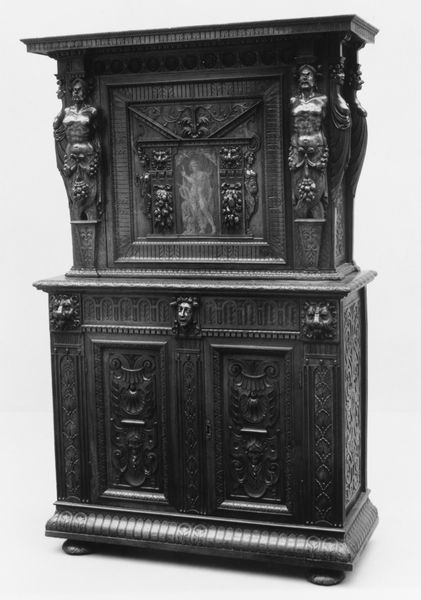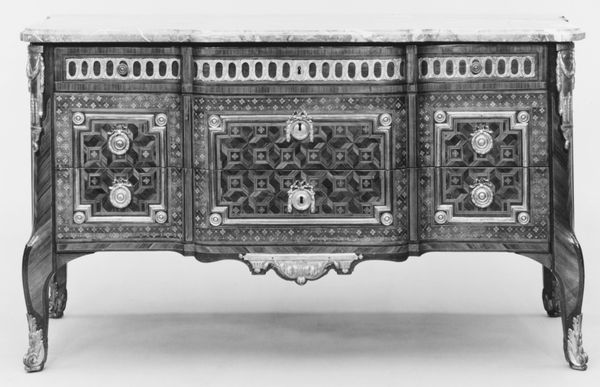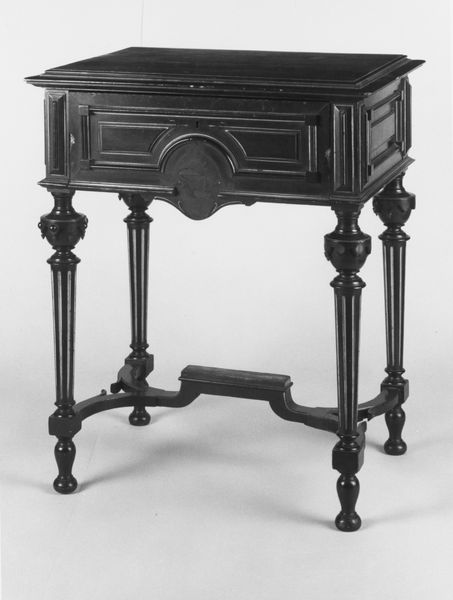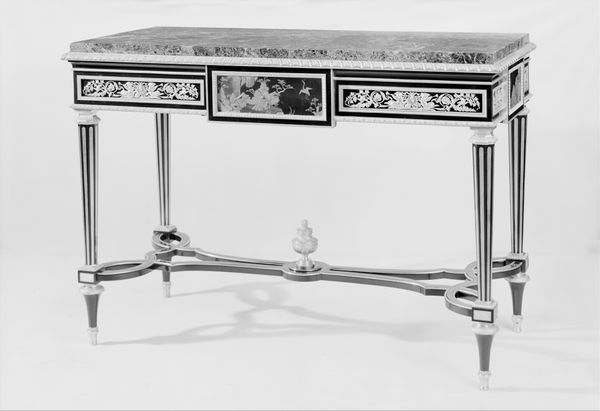
Low cabinet (meuble à hauteur d'appui) (one of a pair) 1785 - 1799
0:00
0:00
ornament, assemblage, metal, sculpture, wood
#
neoclacissism
#
ornament
#
assemblage
#
metal
#
sculpture
#
furniture
#
classical-realism
#
sculpture
#
wood
#
decorative-art
Dimensions: H. 39-3/4 x W. 37-5/8 x D. 16 in. (101 x 95.6 x 40.6 cm)
Copyright: Public Domain
This low cabinet was created by André Charles Boulle in France, during the late 17th or early 18th century. It is made from ebony, pewter, tortoiseshell, gilded bronze and marble. This object embodies the elaborate taste of the French court during the reign of Louis XIV, and the decorative schemes of Versailles. Boulle was a master cabinet maker and his work reflects the wealth and power of the monarchy. The lavish use of expensive materials like ebony and bronze speaks to the global networks of trade and extraction that underpinned the French economy. Consider the visual codes at play here. The cabinet is adorned with classical motifs and allegorical figures. These references were designed to associate Louis XIV with the glory of ancient Rome. As historians, we examine inventories, guild records, and royal commissions to understand the institutional and political context. This cabinet is not just a piece of furniture, it is a statement of political intent and the social structures of its time. It embodies the fusion of art, power, and the meticulous craftmanship of the era.
Comments
No comments
Be the first to comment and join the conversation on the ultimate creative platform.

